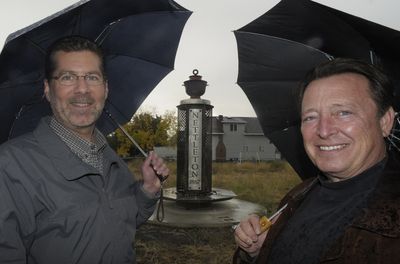Nettleton to dedicate statue

The reclaimed steel sculpture looks such a part of the West Central Neighborhood that one onlooker told artist Steffan Wachholtz she couldn’t believe she’d never noticed it before.
Wachholtz was recently in the process of installing his Nettleton’s Addition Historic District marker near A.M. Cannon Park.
“It’s substantial. It fits into the neighborhood,” he said.
The 14-foot-tall sculpture features a pendulum and seating. The weathered metal looks as if it has stood in the district for the past 100 years. A dedication ceremony is set for noon on Wednesday.
Located in Spokane’s West Central Neighborhood, Nettleton’s Addition is the largest historic district in the state. It is bounded by Bridge Avenue on the south, Chestnut Street on the east, Summit and A Street on the west and Summit and Mission Avenue on the north.
William Nettleton built much of the housing in the neighborhood in the late 1800s and early 1900s. It was marketed as convenient because of streetcar service and its proximity to downtown Spokane.
Early Washington Water Power executives also played large roles in developing the neighborhood, Wachholtz said. That connection is represented in the latest sculpture by the seat. It’s an old spool for holding electrical wire.
The district officially earned historic status in 2005 from the Washington State Historic Register and in 2006 from the National Register of Historic Places.
Wachholtz lives in the district. His home is surrounded by sculptures he designed and built
“We just knew there was someone in this house who could do something for our project,” said Spokane Community Development Public Information Coordinator Kevin Brownlee of Wachholtz’s selection as the artist to create the Nettleton’s Addition Historic District sculptures.
“I have a lot of faith in this neighborhood,” Wachholtz said. He chose to live there because it didn’t involve a hilly commute, was affordable and a place where his creativity would be welcomed.
Today the neighborhood’s historic designation has become a selling point, Brownlee said.
Instead of advertising a home